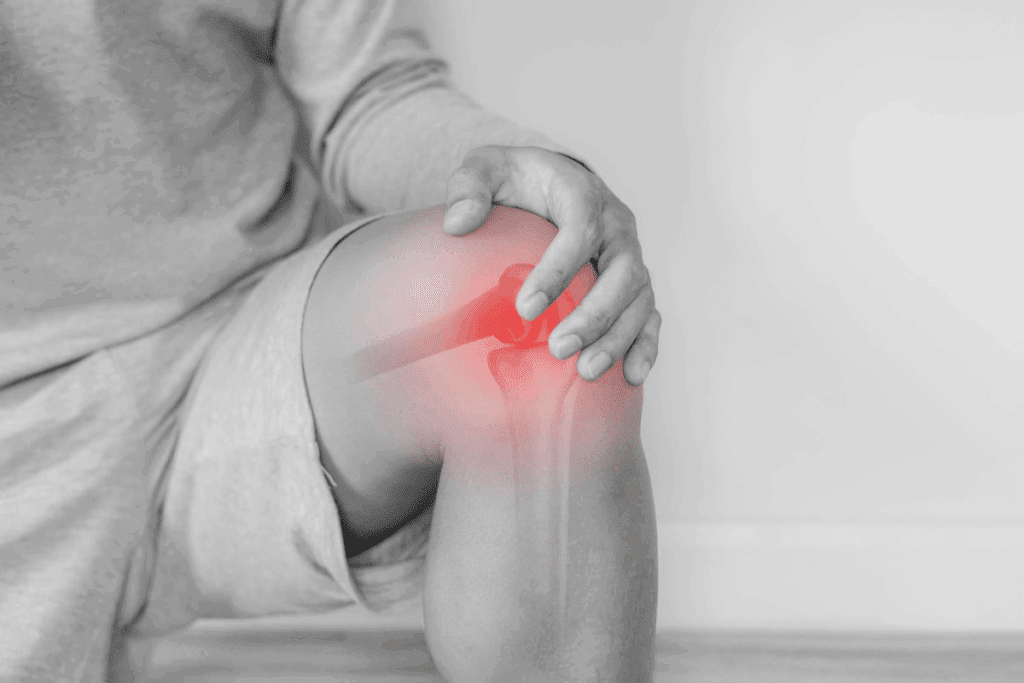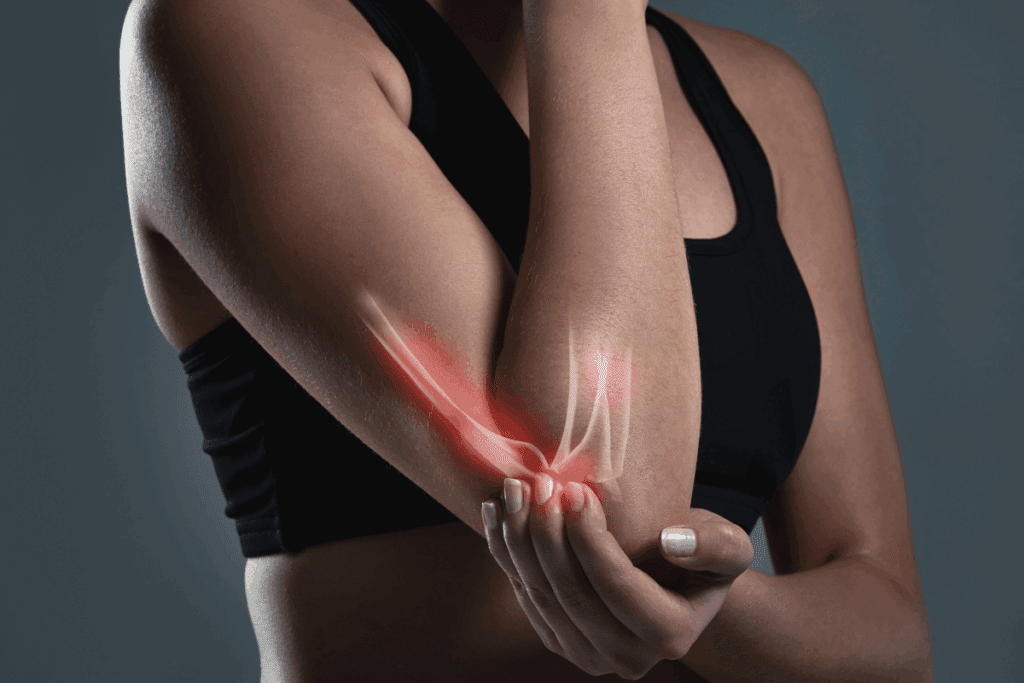Last Updated on November 14, 2025 by mcelik

Bone fracture healing is a complex process. It involves restoring bone tissue after a break.
This process is divided into five key stages. These stages work together to help the bone heal successfully.
The recovery journey includes different cell types and growth factors. These elements help with bone regeneration.
It’s important for doctors and those recovering from bone injuries to understand these stages.
Bone fractures are a big health issue that can happen to anyone, at any age. They cause a break in the bone’s outer layer. Fractures are breaks in the bone and can be different based on where they happen and how bad they are.
Knowing the type of fracture is key to picking the right treatment. There are two main kinds: open fractures have a skin break, and closed fractures don’t. It’s important to understand the fracture’s type and cause. This helps the cellular healing process and ensures the bone heals right.
Fractures are grouped by their look, where they happen, and how severe they are. Some common ones are:
Fractures can happen for many reasons, like accidents, weak bones, or sports injuries. Accidents, like falls or car crashes, are a big reason. Osteoporosis, which makes bones weak, also raises the risk. Knowing why fractures happen helps prevent them and supports the fracture repair phases.
Understanding bone tissue is key to knowing how bones grow and repair. Bone tissue is a dynamic system. It involves many cell types and matrix components working together.
Bone tissue mainly has a collagen matrix. This matrix gives bone its flexibility and strength. It’s filled with calcium and phosphate ions, making it rigid.
The mix of collagen and minerals makes bone strong yet light. This is why bone is so unique.
“The organic matrix, mainly composed of collagen, is key for bone’s tensile strength. The inorganic minerals add to its compressive strength,” studies say.
Bone tissue has different cells, like osteoblasts, osteoclasts, and osteocytes. Osteoblasts form new bone by making bone matrix and mineralizing it. Osteoclasts break down bone tissue through resorption.
This balance between making and breaking bone is vital for bone health.
The process of collagen matrix formation is essential for bone strength. It requires the teamwork of osteoblasts and other cells.

It’s important to know the stages of fracture healing. This helps us understand how our bodies fix themselves. The healing process is complex and controlled by many biological events.
The body’s ability to grow new bone is key in healing. Bone regeneration involves many cells, growth factors, and molecules working together.
The human body can grow new bone tissue. This is vital for fixing broken bones. Cells called osteoblasts and osteoclasts help create new bone.
| Cell Type | Function |
| Osteoblasts | Form new bone tissue |
| Osteoclasts | Resorb bone tissue |
Many things can change how long it takes to heal a fracture. These include:
Knowing these factors helps us plan better for healing. It also helps doctors find better ways to treat fractures.
When a bone breaks, the body creates a blood clot at the break. This clot is key for healing to start.
The body quickly sends more blood to the broken area. This leads to a blood clot forming. The hematoma formation stage is when blood and inflammatory cells gather at the break.
This blood clot acts as a temporary support for healing. It’s full of growth factors and cells that help with the cellular healing process.
Creating a blood clot is a detailed process. It involves platelets and the coagulation cascade, ending in a fibrin clot.
This clot helps cells move and grow, including inflammatory cells and osteoblasts. The inflammatory response phase that follows is vital for healing to begin.

After a fracture, the body starts the inflammatory response phase. This is a key step in healing. It involves the body’s immune cells working to clean the injury site.
In this phase, neutrophils and macrophages are vital. Neutrophils arrive first to fight off debris and bacteria. Then, macrophages clean up and release factors that help healing start.
Osteoblasts, the bone builders, start to get ready to work. They prepare the area for bone repair. This phase clears the way for osteoblasts to do their job.
The length of the inflammatory response phase varies. It depends on the fracture’s severity, any infections, and the person’s health. It usually lasts from a few days to a week. This phase is very important for healing to move forward.
The inflammatory response phase is complex and vital for fracture healing. Knowing about it helps us improve care and outcomes for patients.
The third stage of fracture healing is called soft callus formation. It’s when a soft, callus-like tissue forms. This tissue gives the fracture site some stability at first.
In this stage, cartilage development is very important. Cartilage starts to form at the fracture site. It slowly fills the gap between the broken bones. This cartilage is softer than bone but is key for healing.
Cartilage growth in the soft callus stage needs special factors and cells. Mesenchymal cells turn into chondrocytes. These cells then make cartilage.
Cell growth and change are key in soft callus formation. Cells multiply and change, and they make a matrix outside their cells. This is all controlled by growth factors and other signals.
A big part of this stage is the cellular healing process. The body works together to fix the broken bone. The soft callus makes the area more stable, helping the healing process move forward.
As a bone heals, the soft callus turns into a hard callus. This change is called ossification. It’s key to making the bone strong again.
The ossification process changes cartilage into bone. Osteoblasts are important here. They help make and mineralize bone matrix.
This process has two parts: intramembranous and endochondral ossification. Intramembranous makes bone directly from cells. Endochondral replaces cartilage with bone. Both are needed for the hard callus stage.
| Ossification Type | Description | Role in Hard Callus Formation |
| Intramembranous Ossification | Direct formation of bone from mesenchymal cells | Contributes to the initial formation of the hard callus |
| Endochondral Ossification | Replacement of cartilage with bone tissue | Essential for the complete transformation of soft callus to hard callus |
Bone mineralization adds calcium and phosphate to the bone. This makes the bone strong. Osteoblasts help with this, guided by growth factors and hormones.
Good mineralization is key for strong bones. Nutrition, hormones, and bone health all play a part.
The hard callus stage is complex. It involves many cell and molecular actions. Knowing about these can help improve bone healing.
The final stage of healing a fracture is bone remodeling. This stage is key to making the bone strong and functional again. It reshapes and strengthens the bone to handle everyday stresses and strains.
In bone remodeling, osteoblasts and osteoclasts work together. Osteoclasts break down the bone, while osteoblasts build new bone. This makes the bone strong and its shape right again.
This stage can take months to years, depending on the fracture’s severity and the person’s health. Proper nutrition and enough rest help a lot in this process.
As the bone is remodeled, it gets back to normal. People can start doing things they love again without worry. This stage is vital for a full recovery from a fracture.
When bone remodeling is done, the healing of a fracture is complete. It shows how amazing our bodies are at fixing themselves. It also shows why good care and nutrition are so important during healing.
The healing of a fracture is a complex process. It depends on the fracture’s type and location. Knowing this timeline helps both patients and doctors manage healing expectations.
The healing process has five stages. These are: hematoma formation, inflammatory response, soft callus formation, hard callus formation, and bone remodeling. Each stage lasts a different amount of time, affecting the total healing time.
The healing time for fractures can change a lot. This depends on the fracture’s type, location, age, nutrition, and health. For example, fractures in areas with good blood flow heal faster than those with less blood flow.
For example, upper limb fractures heal faster than lower limb fractures. This is because of differences in blood supply and mechanical stress. Younger people’s fractures also heal quicker than older adults’.
It’s important to understand these differences. This helps in creating better treatment plans and managing what patients expect.
Understanding how bones heal is key to knowing how fractures mend. Bone healing is a complex process. It involves growth factors, signaling molecules, and genes working together.
Growth factors and signaling molecules are vital in healing. Transforming Growth Factor-Beta (TGF-β) and Bone Morphogenetic Proteins (BMPs) help form new bone. They turn stem cells into bone-making cells.
The Wnt/β-catenin signaling pathway also plays a big role. It helps control bone-making cells and keeps bones healthy. These signals are important for healing fractures.
Genes are key in making sure bones heal right. Certain genes control the use of growth factors and signals. This affects how bones repair themselves.
Gene expression is carefully managed. Transcription factors and microRNAs have big roles. Knowing about these genetic processes can help find new ways to improve bone healing.
Fracture healing relies heavily on the growth of vascular tissue. A healthy blood supply is key. It brings oxygen, nutrients, and growth factors to the healing area.
The process of restoring blood supply involves angiogenesis. This is the creation of new blood vessels from old ones. Growth factors and signaling molecules help in this process.
At the start of fracture healing, blood supply is often lost. This creates a low-oxygen environment. But as healing goes on, angiogenesis brings back a normal blood supply. This supports the next stages of bone repair.
Angiogenesis is vital for fracture healing. It makes sure nutrients and oxygen reach the healing bone. New blood vessels also help bring in cells needed for bone repair.
The role of angiogenesis in bone healing is clear. Without it, fractures might not heal properly. This shows how important vascular growth is during healing.
Monitoring fracture healing involves several methods to check on recovery. It’s important to accurately track healing to ensure bones mend right and catch any issues early.
X-rays are key in tracking fracture healing. They show how callus forms and the gap between the bone closes. Computed Tomography (CT) scans give more detailed images, useful for complex fractures or suspected complications.
Magnetic Resonance Imaging (MRI) also helps. It shows soft tissues and bone marrow, helping to see how healing is going and spot any problems. The right imaging depends on the fracture’s type, location, and the situation.
Besides imaging, biochemical markers offer insights into bone healing. Bone turnover markers like alkaline phosphatase and osteocalcin show bone formation and breakdown. These markers help doctors see how healing is going and spot any issues.
Other markers, such as procollagen type I N-terminal propeptide (P1NP) and C-telopeptide of type I collagen (CTX), also help. They give clues about bone remodeling and guide treatment choices.
Effective fracture healing often relies on specific medical interventions. These interventions support the healing process, ensuring the bone returns to normal function.
Immobilization is key for fracture healing. Techniques like casting and bracing provide stability, allowing the bone to heal. Casting involves encasing the affected limb in a plaster or fiberglass cast, while bracing uses a supportive device.
The choice between casting and bracing depends on the fracture type and location, and the patient’s health. Both methods help create a stable environment for bone healing.
| Immobilization Method | Description | Typical Use |
| Casting | Encasing the limb in a cast | Simple fractures, immobilization of joints |
| Bracing | Using a supportive brace | Fractures requiring less immobilization, post-surgical support |
In some cases, surgery is needed to support fracture healing. Internal fixation is a common surgical method. It uses devices like plates, screws, or rods to stabilize the bone internally.
Surgery is often used for complex or unstable fractures. The decision to have surgery depends on the fracture’s severity and the patient’s health.
The table below summarizes the key differences between immobilization techniques and surgical approaches:
| Method | Key Characteristics | Typical Indications |
| Immobilization Techniques | Non-invasive, provides external stability | Simple fractures, initial fracture management |
| Surgical Approaches | Invasive, provides internal stability | Complex fractures, unstable fractures, failed conservative management |
The healing of bone fractures can be complicated by several factors. These factors can affect the recovery process. While the body can heal fractures well, some complications can impact treatment outcomes.
Two major complications are delayed union and non-union. Delayed union means healing is slower than expected. Non-union is when the bone doesn’t heal at all. These issues can come from poor immobilization, infection, and bad nutrition.
“Preventing and treating delayed union and non-union needs a detailed approach,” say doctors. Smoking, some medicines, and health problems can also cause these issues.
Malunion happens when the bone heals in the wrong position. This can cause deformity or make it hard to move. Other problems include infection, nerve damage, and hardware failure with surgery.
A study found that malunion often comes from bad initial treatment. It shows how important precise treatment and follow-up care are. This helps lower the risk of these issues.
It’s key for healthcare providers and patients to know about these complications. This knowledge helps ensure the best healing outcomes for fractures.
Effective bone healing needs the right nutrients and healthy habits. Good nutrition gives bones the tools to repair themselves. Lifestyle choices can help or hurt this process.
Calcium and vitamin D are key for bone health and healing. Calcium is a major part of bones, and vitamin D helps the body absorb it.
Key Nutrients for Bone Healing:
| Nutrient | Role in Bone Healing | Food Sources |
| Calcium | Essential for bone structure and density | Dairy products, leafy greens, fortified foods |
| Vitamin D | Facilitates calcium absorption and bone mineralization | Fatty fish, fortified dairy products, sunlight exposure |
| Protein | Provides amino acids for bone matrix formation | Meat, poultry, fish, beans, eggs |
Good nutrition is just part of the story. Lifestyle choices also play a big role. Quitting smoking and keeping a healthy weight are key. Smoking hurts blood flow and health, while too much weight stresses healing bones.
Healthy Lifestyle Choices:
Knowing the 5 stages of fracture healing is key to successful recovery and avoiding problems. This process is complex, starting with blood clotting and ending with bone strengthening.
Healing fully needs a detailed plan, considering diet, lifestyle, medical help, and possible issues. Understanding each stage helps doctors care for patients better and improve results.
Fracture healing stages are vital for bone health. Knowing them well helps in making better treatment plans. This knowledge helps people take steps to support their healing and get back to normal life.
The healing of a fracture goes through five stages. First, a hematoma forms. Then, the body responds with inflammation. Next, a soft callus forms, followed by a hard callus. Lastly, the bone is remodeled.
Osteoblasts help build bone, while osteoclasts break it down. It’s important to have a balance between these two for bone health.
Healing time varies. It depends on the fracture’s type and location, and on factors like age and nutrition.
The inflammatory phase is key. It clears debris and bacteria, starting the healing process.
Good nutrition is vital. It includes calcium and vitamin D. Without it, healing can be slowed.
Complications include delayed or non-union, and malunion. These can be due to poor nutrition, infection, or inadequate immobilization.
X-rays and CT scans show how healing is going. Biochemical markers also help track bone turnover.
Vascular regeneration is vital. It brings oxygen and nutrients. New blood vessel formation is a key part of this.
Lifestyle choices matter. Quitting smoking and staying healthy can help. But smoking and too much alcohol can slow healing.
Fractures are either open or closed. Open fractures break the skin, while closed ones don’t.
Subscribe to our e-newsletter to stay informed about the latest innovations in the world of health and exclusive offers!